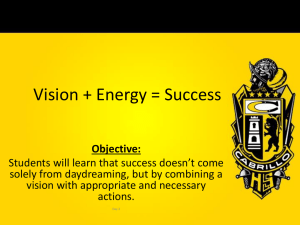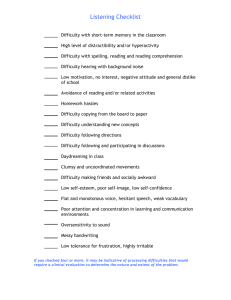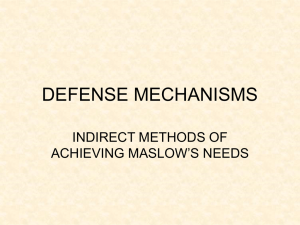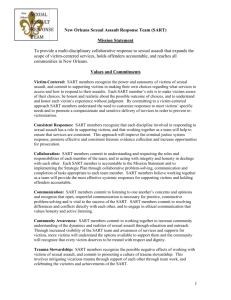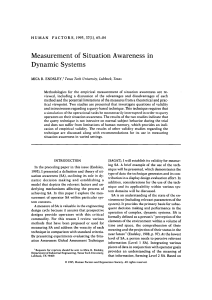March 24 HF302 - freville-at
advertisement
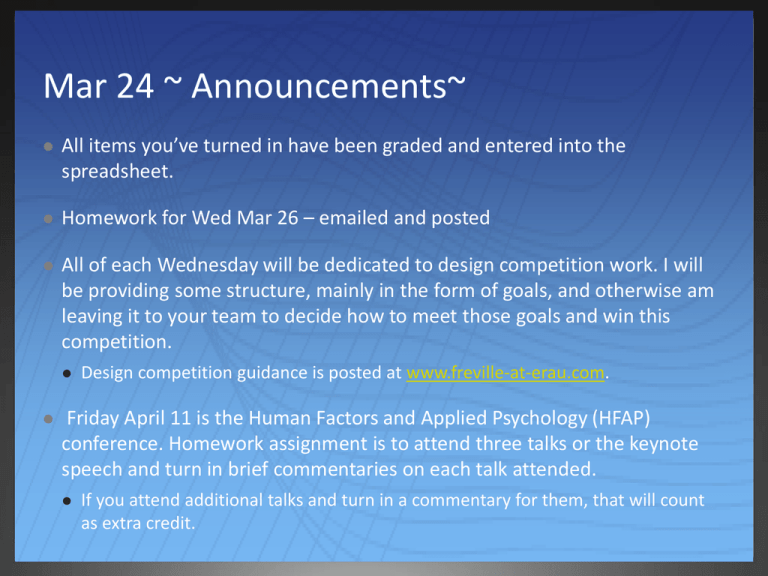
Mar 24 ~ Announcements~ All items you’ve turned in have been graded and entered into the spreadsheet. Homework for Wed Mar 26 – emailed and posted All of each Wednesday will be dedicated to design competition work. I will be providing some structure, mainly in the form of goals, and otherwise am leaving it to your team to decide how to meet those goals and win this competition. Design competition guidance is posted at www.freville-at-erau.com. Friday April 11 is the Human Factors and Applied Psychology (HFAP) conference. Homework assignment is to attend three talks or the keynote speech and turn in brief commentaries on each talk attended. If you attend additional talks and turn in a commentary for them, that will count as extra credit. Mar 24 ~ Things to Know for Friday’s Quiz ~ What does SAGAT stand for? When using SAGAT, what three types of questions can you ask when you freeze the display? To what point in time do your SAGAT questions refer back to? Who developed the SAGAT method? What does SART stand for? How is the SART score calculated? (What’s the equation?) Who developed SART? Before you use acronyms in your writing, you first need to: How do you get an ‘A’ on the design project? Mar 24 ~ Things to Know for Friday’s Quiz ~ Joshua compared all ERAU juniors and seniors on the amount of class time spent daydreaming during February. He found that juniors spent an average of 19 minutes daydreaming and seniors spent an average of 20 minutes daydreaming. Next, Joshua compared all juniors and seniors in HF302 on the amount of class time spent daydreaming during April. He found that HF302 juniors spent an average of 19 minutes daydreaming and HF302 seniors spent an average of 29 minutes daydreaming. Which of the two differences Joshua measured is most likely to be a statistically significant difference? Mar 24 ~ Things to Know for Friday’s Quiz ~ What three factors affect whether a difference will be a statistically significant difference? What three factors should you report about your data when you write your research paper’s Results section? What does it mean when a difference is statistically significant? What can you say about the difference? What if the difference is not statistically significant? What does that mean you can say about the difference? What comparison would you make using the data on the next slide? What is the IV? The DV? What statistical comparison might be made using these data? Tetris What’s your research question or hypothesis? What’s your independent variable? What’s your dependent variable? Exp.Group Exp. Score 1 0 1 0 1 0 1 0 1 0.5 1 0.5 1 0.5 1 1 2 2 2 2 2 2 2 2.5 3 8 3 8 3 10 Score 662 852 296 307 996 6030 9592 11865 497 370 5440 990 13590 628 1502 Student’s t-test of independent samples: Is there a significant difference between two groups? T-Test of independent samples _ _ = X-Y / Standard Error (SE) Pooled standard deviation, weighted for sample size, is the square root of: Design Competition See www.freville-at-erau.com Example Gantt Chart
